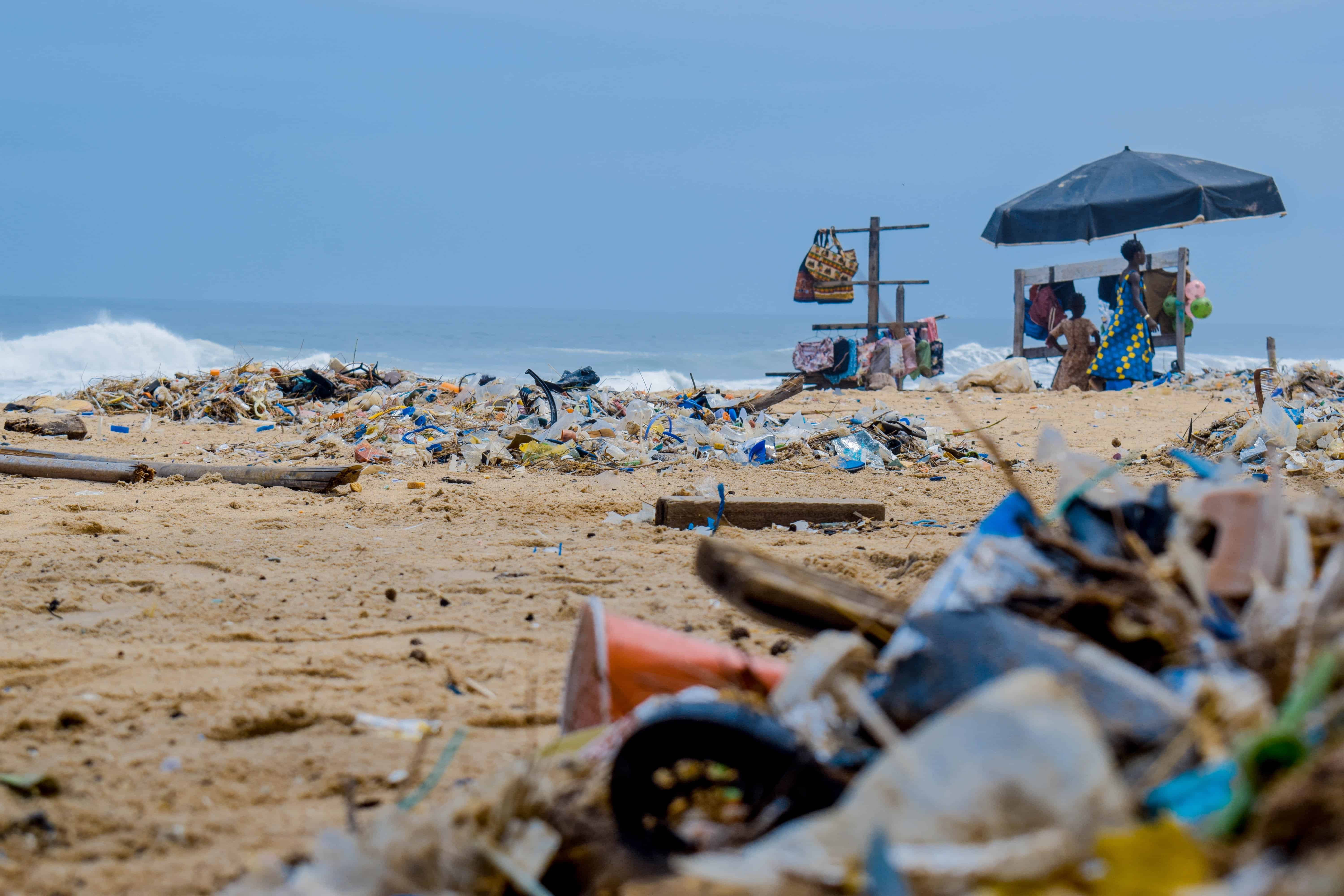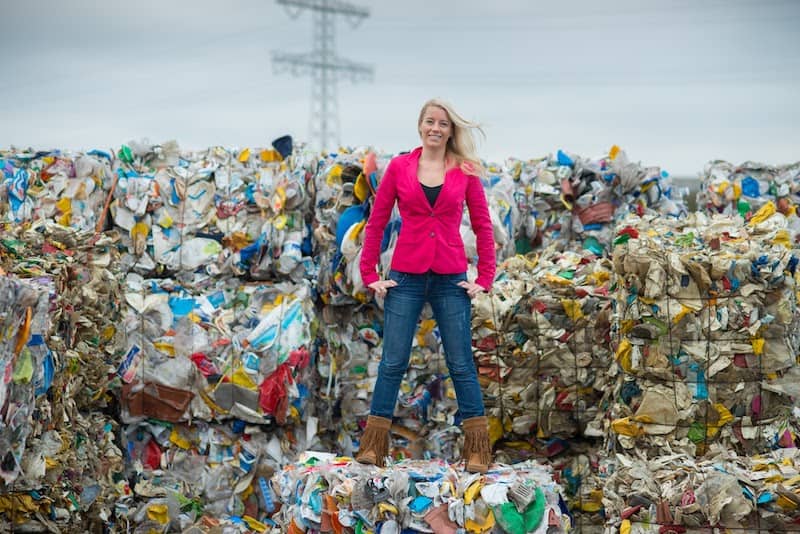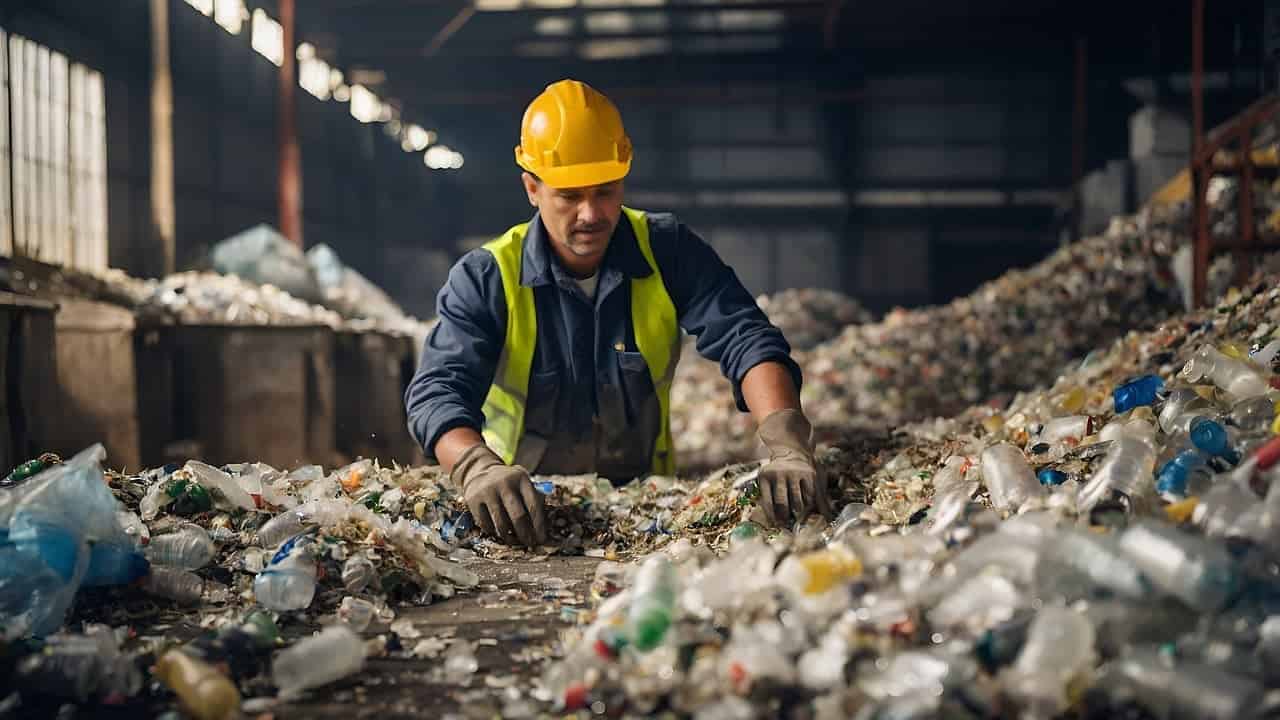
Plastic waste is one of the greatest problems of our time. While in the 1950s about 1.5 million tons of plastic were produced per year, today it is almost 300 million tons. According to a WWF estimate, up to 12.7 million tons of these end up in the sea every year. Only a small part of it floats on the surface, the rest is pulled into deeper waters or onto the seabed. Around 80 million tons are said to have accumulated there by now.
However, plastic waste and plastic particles are not only found in the oceans, they can be found everywhere: in groundwater, in the air, in what we eat and drink. So far only a tiny fraction is being recycled, since these processes are very energy- and cost-intensive, as most recycling processes depend on crude oil.
The main part of this plastic waste consists of polyethylene terephthalate (PET), the material from which water bottles and many packages are made. The big problem here is that a plastic bottle, for example, needs 450 years to be decomposed, a plastic shopping bag between ten and 20 years. To accelerate this process, researchers at the University of Greifswald, the Helmholtz-Center Berlin (HZB) and the Freie University of Berlin have deciphered the structure of an enzyme that could greatly reduce the time required for PET to decompose.
At the synchrotron light source BESSY II at the HZB, the scientists deciphered the three-dimensional structure of the important enzyme (“MHETase”) that they discovered in a bacterium. Together with a second enzyme, PETase, MHETase is able to decompose PET into its basic building blocks. Due to the 3D structure of MHETase, the researchers were able to optimize this enzyme, so that it could be used together with PETase for the sustainable recycling of PET.

Bacteria on PET
Japanese scientists have already discovered a bacterium in 2016, that can grow on PET plastics and partially feed on them. They found out that this bacterium has two special enzymes that are able to degrade PET plastics: PETase and MHETase, whereby PETase makes the first step towards decomposition. It breaks down the plastic into smaller building blocks, whereupon MHETase then breaks them down into the two basic PET building blocks.
In April 2018, researchers succeeded in deciphering the structure of the enzyme PETase. However, the structure of the MHETase enzyme must also be known in order for the two enzymes to “collaborate” perfectly. “MHETase is considerably larger than PETase and even more complex. A single MHETase molecule consists of 600 amino acids, which is more than 4000 atoms”, explains biochemist and structural biologist Dr. Gert Weber from the joint research group Protein Crystallography at Helmholtz-Center Berlin and Freie University Berlin. “The MHETase has a surface area about twice as large as that of PETase. This means that there are considerably more options for modifying the surface of this enzyme and optimizing it for the decomposition of PET.”
Weber worked with Prof. Dr. Uwe Bornscheuer at the Institute of Biochemistry, who was already working on plastic degrading enzymes. They first extracted the enzyme from the bacterial cells and purified it. They then examined the MHETase with X-rays at the synchrotron light source BESSY II at the HZB in order to decipher its complex three-dimensional structure.
“In order to see in the structure how the enzyme binds to PET and decomposes it, we need a plastic fragment that binds to MHETase but is not split”, explains Dr. Weber. A PET bottle was cut up, the PET chemically decomposed and a small particle synthesized from it that binds to MHETase but cannot be cleaved by MHETase. From this ‘blocked’ MHETase, tiny crystals were grown at the HZB for structural investigations. “These structural investigations enable us to ‘watch the MHETase at work’ and develop strategies to optimize the enzyme”, explains Dr. Weber.

MHETase Decrypted
In the course of their investigations, the researchers also discovered that enzymes such as MHETase first bind to their target molecule before a chemical reaction occurs. For each molecule to be degraded, a tailor-made enzyme is thus required: “We can now exactly localize where the MHET molecule docks to the MHETase and how it is cleaved into its two components terephthalic acid and ethylene glycol”, said Dr. Weber.
Thanks to this knowledge, it should now be possible to further optimize the enzyme, because PETase and MHETase are not particularly efficient so far. “Plastics have only been available for a few decades on this scale – even bacteria with their rapid generation sequence and rapid adaptability do not manage to develop a perfect solution in such a short time through the evolutionary process of trial and error”, explains Weber.
Prof. Bornscheuer emphasizes that it is now also possible to “plan, produce and biochemically characterize variants that show significantly higher activity than natural MHETase and are even active against another intermediate product of PET degradation, BHET”. The work of Bornscheuer, Weber and their colleagues could pave the way for a “perfect recycling”: The enzymes could break down PET in such a way, that they can be recycled in closed cycles. “Provided that waste is separated, plastic production would then be a closed cycle and no longer dependent on crude oil”, explain the researchers. “Part of the plastic waste problem could thus be solved.”
The results of the study “Structure of the plastic-degrading Ideonella sakaiensis MHETase bound to a substrate” were published in the journal Nature Communications.
Also interesting:
Microplastics are Everywhere – “Our Despicable Behavior has to Stop”
Biodegradable Plastic Packaging – It’s Time to also use it for Food








